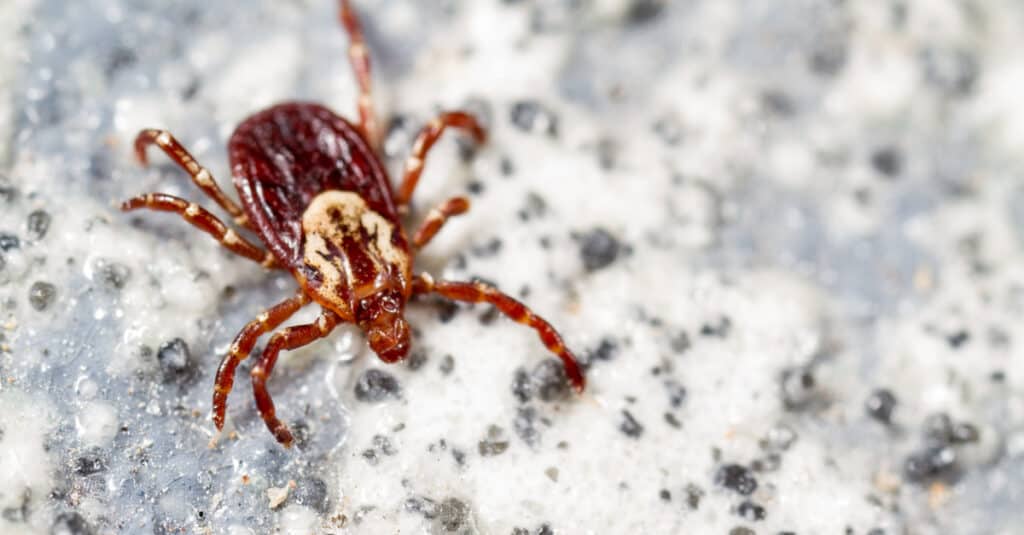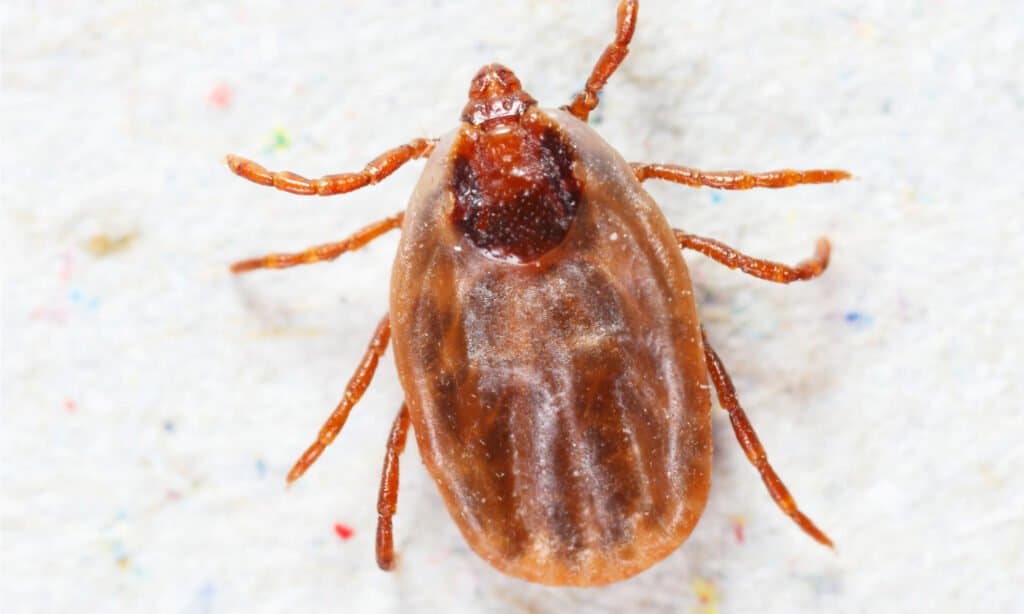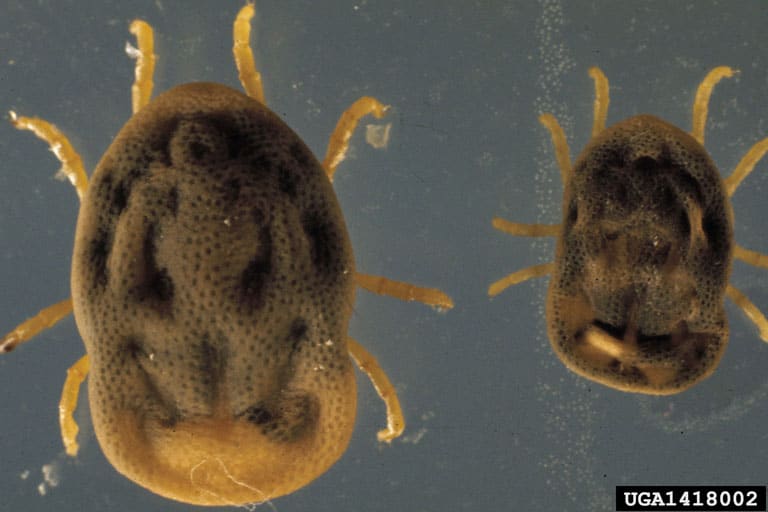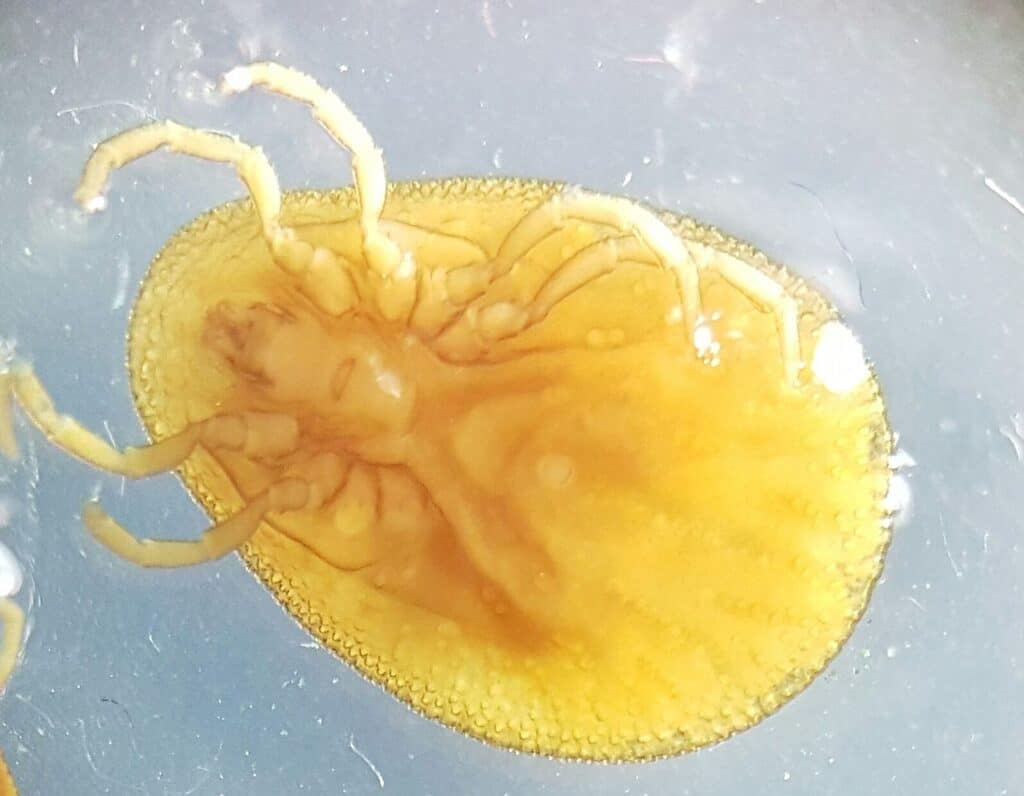The ticks in Oklahoma are, unfortunately, a fact of life. There is almost nowhere on Earth that is tick-free. These tiny bloodsuckers, or, scientifically, obligate hematophagous, have been around since the Cretaceous period, about 100 million years ago. In all that time, they’ve remained nearly unchanged. Ticks can’t see, jump, or run. What they can do is sense warm bodies, and embed their sharp mouthparts into those bodies to suck out the blood that sustains them. Ticks are among the only species on the planet that can expand up to six times their normal body size when full with a blood meal.
Here, we’ll take a look at the most common ticks in Oklahoma, both hard-bodied, and soft-bodied. We’ll learn what each unique species looks like, and how to tell them apart. Then, we’ll learn about the favorite prey of each tick, and whether or not they bite humans. We’ll also take a look at which ticks transmit deadly diseases, and what you should do if you’re bitten by one. Finally, we’ll discuss how to avoid getting bitten by a tick in the first place.
Hard-Bodied Ticks (Ixodidae)
1. American Dog Tick (Dermacentor variabilis)

One of the most common ticks in North America, these ticks are commonly known as wood ticks.
©Elliotte Rusty Harold/Shutterstock.com
American dog ticks are the largest ticks in Oklahoma, they’re also the only ticks in Oklahoma that transmit Rocky Mountain spotted fever. Adults are red-brown in color, with small mouthparts and mottled tan backs. They frequently bite people and are most often encountered in woodlands. Young American dog ticks feed primarily on mice, rats, squirrels, and rabbits. Adults will feed on any medium to large-sized mammals, including humans and dogs.
2. Black-legged Tick (Ixodes scapularis)

Perhaps the most worrisome tick in the United States, black-legged ticks are also known as deer ticks.
©iStock.com/Ladislav Kubeš
Black-legged ticks in Oklahoma do not carry Lyme disease, but they can transmit several pathogens to human and canine hosts. These ticks are easily recognizable by their black legs. Females have black legs and distinct red-brown bodies, with black scuta (the hard shields on their upper backs).
Adult black-legged ticks feed mostly on deer and cattle, while nymphs and larvae feed primarily on lizards and snakes. They’re one of the most common ticks to parasitize humans.
3. Gulf Coast Tick (Amblyomma maculatum)

One of the less common ticks in North America, Gulf coast ticks primarily feed on cattle and ground-dwelling birds.
©iStock.com/cturtletrax
Gulf coast ticks are similar in appearance to American dog ticks. But, Gulf coast ticks have larger mouthparts and are much smaller in size than American dog ticks. These ticks in Oklahoma prefer the blood of sheep, coyotes, dogs, deer, and occasionally humans. They may transmit Rickettsia parkeri to humans, but do not carry Lyme disease or Rocky Mountain spotted fever.
4. Lone Star Tick (Amblyomma americanum)

The Lone Star tick is one of the most frequently encountered ticks in Oklahoma.
©iStock.com/epantha
The lone star tick truly has no preference when it comes to hosts. These ticks have been found on just about every creature imaginable, including humans. Females are easy to recognize by the large white spot on their back, while males lack the spot. These ticks in Oklahoma have red-brown bodies and large mouthparts. They’re capable of spreading several pathogens to hosts.
Lone star ticks have large mouthparts, which means their bites are particularly deep. Bites from these, or any tick, can lead to infection. So it’s important to sterilize any bite after removing the embedded tick.
5. Winter Tick (Dermacentor albipictus)

Winter ticks almost never feed on humans, preferring instead large mammals like elk, deer, horses, and cattle.
©iStock.com/VladK213
Winter ticks are the only ticks in Oklahoma that actually become more active in the fall and winter. These ticks spend their entire life cycle on a single host. Most often, this host is a large mammal, like a white-tailed deer, or a cow. These ticks very rarely bite humans, but frequently feed on horses.
6. Brown Dog Tick (Rhipicephalus sanguineus)

These ticks favor dogs, and almost always occur indoors.
©7th Son Studio/Shutterstock.com
Of all the ticks in Oklahoma, the brown dog tick is the only one that lives indoors. These ticks feed almost exclusively on dogs, though they occasionally bite humans or cats. Brown dog ticks can transmit several dog-specific diseases. They’re most often found attached to dogs’ ears, bellies, or between their toes. These ticks typically live anywhere dogs are in residence, like kennels or dog beds.
Soft-bodied Ticks (Argasidae)
1. Spinose Ear Tick (Otobius megnini)

The spinose ear tick is named because of its predilection for feeding from the ears and ear canals of its hosts.
©Mat Pound-USDA Agricultural Research Service Country-United States / Creative Commons – License
These ticks in Oklahoma are a little different than their hard-bodied cousins. Spinose ear ticks only infest the ear canals of their hosts, which usually include domestic horses and cattle. They occasionally feed on humans. Only larval and nymph-aged spinose ear ticks parasitize animals; adults do not take blood meals. These ticks resemble tiny peanuts with legs.
2. Fowl Tick (Argas persicus)

Also known as blue bugs, these ticks primarily feed on birds, like chickens and turkeys.
©Navid.drogba / Creative Commons – License
As the name suggests, fowl ticks feed almost exclusively on birds. They don’t bite humans. Instead, these ticks in Oklahoma spend their time feeding on a host during the day, and climbing off and hiding in the dark at night. They can complete their entire life cycle in under two months, or go years without a blood meal if necessary.
How to Avoid Ticks in Oklahoma
You’re most likely to encounter ticks in Oklahoma if you’re doing something outside. This is particularly true of hiking, camping, or any other outdoor activity. The first step you should take is to wear long pants and long-sleeved shirts. Light colors are best, as ticks show up easily on them. If you spot a tick on your clothing, remove it and kill it.
Insect repellent is also a good tool against ticks. However, be careful to spray it only on your clothing, not your skin. For your canine companion, choose a good flea and tick prevention method.
The photo featured at the top of this post is © iStock.com/nechaev-kon
Thank you for reading! Have some feedback for us? Contact the AZ Animals editorial team.






